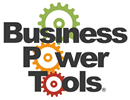How to Measure Results
Back to PR Tutorial Index
How do you measure the effectiveness of publicity? Holly Hartz, director of public relations at Electronic Arts, offers an innovative, common sense approach that features hard numbers instead of warm fuzzies. She correlates the amount of editorial coverage to the amount of money the company would have to spend to buy an equivalent amount of advertising. Since marketing types understand the value of advertising, this method, called “equivalent dollars,” holds promise for proving a publicity program’s value.
“Corporate people like this approach,” confirms John Nelson, president of The Right Brain, a public relations agency and publisher of News Track software that tracks media contacts. “It suits their base of experience. There is a dollar value you can put on CPMs (cost per thousand) to evaluate a marketing plan. In PR, you very frequently go into it on those terms. You want to broaden awareness. It is a good rough measure.”
Hartz was introduced to this technique several years ago when she interviewed for her job. Her boss held her accountable for producing an amount of press coverage that would equal several hundred thousand dollars worth of advertising. In other words, they would measure the size of each article to find the number of column inches it occupied. Then they would be able to determine how much money the company would have to spend to buy the same amount of advertising space.
“It was a brutal motivator,” she said, “but it is a great way to work. I had never been in a company where the expectations were so high. It has worked well.” This kind of accountability is now standard at Electronic Arts. Each publicist, including Hartz, is accountable for producing a set amount of editorial coverage that corresponds to advertising dollars. So strong is the respect for this program, that Electronic Arts bases its bonuses on how well publicists meet and exceed the goals.
“My publicists are completely accountable for what they do,” Hartz said. Many clients wish their agencies could be held accountable as well. This method also provides agencies with a tool to justify their fees and renew
their contracts.
“If I were a PR agency, I would be able to go to the client and say we got hundreds of thousands of dollars, and now millions, worth of advertising,” she said.
When you consider that a typical advertising budget is ten times that of the publicity budget, these ad equivalency dollars are extremely impressive. Several companies offer their services to find and cut the articles, log the clips, measure the column inches and convert that figure to ad dollars. They can also prepare reports that list the circulation, reader audience, and type of article (feature or mention). Further reports can list the breakdown by editorial message, editorial slant (positive or negative) and content source. These companies require you to have a basic news clipping service as well as the ad equivalency analysis. Bacon’s, Burrelle’s (see “Monitor Results” earlier in this chapter) and the Delahaye Group (603-926-3600) are three of the companies that offer tracking services. Of course, you can choose to do the work in-house.
You may wonder about the relative merits of a one-inch ad compared to a one-inch rave review in the New York Times, or the number of sales leads generated by an ad versus a positive review. No system can measure these perfectly, of course, but the “equivalent dollars” method seems to be a good way to justify a publicity program to members of the management team who rely on hard numbers.
